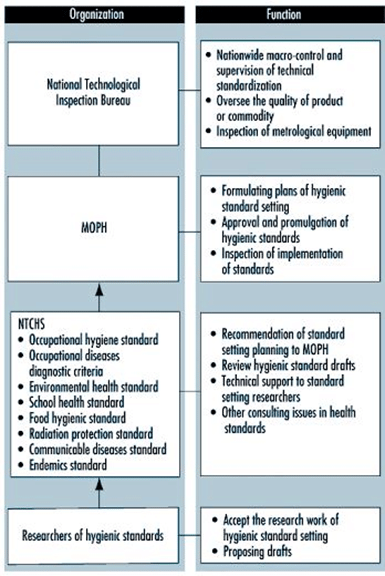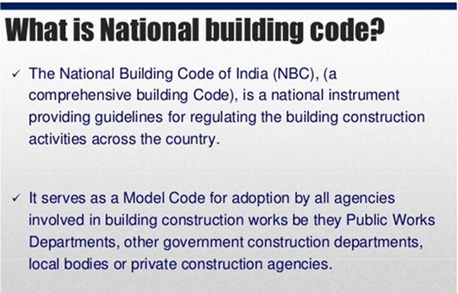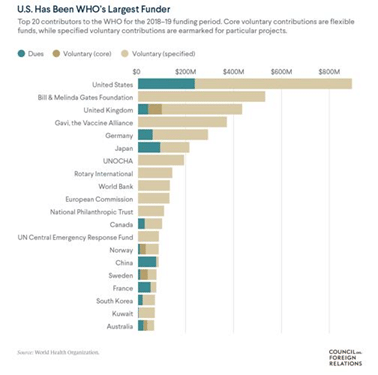11 August 2020: The Hindu Editorial Analysis | Additional Study Material for UPSC PDF Download

1. Hospitals afire: on lack of safety in health-care centres-
GS 2- Important aspects of governance, transparency and accountability
Context
(i) The shocking deaths of at least 19 people in special facilities for COVID-19 management in Vijayawada and Ahmedabad have exposed the deep rot(gap) in regulatory processes for institutional and commercial building safety.
(ii) While 11 died in the Andhra Pradesh incident, where a hotel had been taken over by a private hospital to run a COVID-19 care centre, 9 patients perished(died) in the blaze(fire) in a Gujarat hospital ICU.
PASSING THE BUCK:
(i) Such incidents which claimed the lives lay bare(exposes) the lack of preparedness among States to manage the expanding pandemic, and hasty(hurry) contracting procedures.
(ii) In a familiar pattern, civic and fire authorities who were expected to monitor the safety of such buildings have sought to pin(put) responsibility for the carnage(damage) on the owners of the properties.
(iii) They are being held responsible for failure to obtain a no objection certificate or, in the case of the hotel-turned-COVID-19 care centre, carrying out electrical upgrades for safety.
(iv) This is clearly untenable(not defendable). The Supreme Court of India observed about a decade ago in the Uphaar cinema fire tragedy case in Delhi.
A) SC pulled up authorities including the Union Home Ministry for abdicating(giving up) responsibility and passing the buck(responsibility) on to the management of the institution.
(v) In the Ahmedabad ICU blaze, patients expected the institution to offer the highest levels of safety, but suffered as it was ill-equipped to fight a fire.
REGULATING HOSPITALS:
(i) Safety regulation of buildings used for health-care delivery is a subset of the overall need to regulate hospitals, and States should use the recent deadly fires as the occasion to launch much-delayed reform.
(ii) In the absence of safety systems, many died of fire and smoke inhalation, while those who survived had nothing but luck to count on. This situation cannot be allowed to continue.
(iii) The National Building Code of India, with additional fire safety provisions for hospitals, is the basis for hospital accreditation systems, but these should be made mandatory and enforced in all States.
(iv) If smoke alarms and sprinkler systems, along with local fire-fighting aids are available, loss of life can be eliminated(reduced).
(v) All patients should also be covered by substantial life insurance. Evacuation systems for ICU patients need to be part of the building design.
(vi) Often, hospital buildings are regularised for unapproved constructions by State governments acting thoughtlessly.
(vii) Schemes introduced to regularise building violations are clearly anti-social in character.
(viii) Health-care centres lack fire safety because governments pay lip service(no real action) to regulation.
CONCLUSION:
The many fires in institutional buildings and their terrible toll(death) should lead to a full inspection of all such facilities for safety, with civil society keeping up the pressure on governments to act.
2. The WHO’s relevance is fading-
GS 2- Important International institutions, agencies and fora, their structure, mandate
CONTEXT:
(i) COVID-19 has infected more than 19 million people, claimed over 0.7 million lives and devastated(harmed) economies.
(ii) As the pandemic transcends(passes) geopolitical boundaries, one is forced to ruminate(reflect) on a counterfactual with a series of timely global health interventions by the WHO duly supported by governments.
(iii) An early warning and timely policy measures by the WHO would have forewarned countries and set their preparatory efforts in motion for mounting(building) a decisive response strategy.
SLOW RESPONSE:
(i) With regional offices in six geographical regions and country offices across 150 countries, the WHO was expected to play the dual role of a think tank and oversee global responses to public health emergencies.
(ii) It was reported that the earliest COVID-19 positive case in China was reported in November, but China informed the WHO about the disease only in January.
(iii) With the WHO country representative stationed in Beijing, it is unlikely that widespread transmission went unnoticed.
(iv) Then, even though confirmed cases were reported from Japan, South Korea, Taiwan and the U.S. in January, the WHO continued to downplay the severity of the virus.
(v) It took some inexplicable(cannot be explained) decisions and actions such as declaring the pandemic as a public health emergency of international concern only on January 30.
(vi) It ignored Taiwan’s hints of human-to-human transmission and requests on sharing “relevant information”. Further, the WHO went on to praise China’s response to the pandemic.
(vii) WHO was severely criticised for its poor handling of the Ebola outbreak in 2014 as well. Incontrovertibly(the truth), the relevance of the health agency has been fading(reducing).
(viii) The WHO has been reduced to a coordinating body, beholden(obligated) to the interests of rich member states.
(ix) Its functional efficiency has been disadvantaged with organisational lethargy(lack of commitment and absence of decisive leadership.
(x) The bureaucratic indolence(laziness) and underfunded programmes along with its inability to evolve to meet the needs of the 21st century is harming the reputaton of WHO.
RELYING ON RICH MEMBER STATES:
(i) WHO is funded through assessed contributions made by the member states and voluntary contributions from member states and private donors.
(ii) While assessed contributions can be spent as per the organisation’s priorities approved at the World Health Assembly, the irregular voluntary contributions are allocated in consultation with the donors.
(iii) While voluntary contributions accounted for nearly 80% of the budget in 2018-19, assessed contributions merely constituted 17% of the total budgetary support.
(iv) The challenges owing to constrained finances encumber(hinder) autonomy in decision-making by favouring a donor-driven agenda.
(v) While the WHO has failed in arresting the pandemic, governments across the globe are equally responsible for their inept(poor) handling and ill-preparedness.
(vi) However, that does not vindicate(absolve) WHO’s tardiness in handling the crisis.
(vii) Many countries, especially in Africa and Asia, rely predominantly on the WHO for enforcing policy decisions governing public health.
(viii) Political leanings and financial compulsions of WHO cannot betray that trust.
CONCLUSION:
The burden of their expectations must weigh heavily on every policy decision taken by the global health agency, for when the WHO fails, many innocent lives are lost.
3. Isolating China, as proposition and the reality-
GS 2- Effect of policies and politics of developed and developing countries on India’s interests
CONTEXT:
(i) The latest round of talks, August 2, between the Military Commanders of India and China, did not produce any breakthrough(solution).
(ii) And the situation along the Line of Actual Control (LAC) in the Ladakh sector thus remains essentially unchanged.
(iii) All that is evident(obvious) is that China has indicated a willingness to resile(abandon) from occupying territory beyond its 1960 Claim line.
(iv) A return to the situation prior to May this year, is nowhere in sight.
Meanwhile, a war of words between India and China has broken out.
(v) India’s External Affairs Minister has promulgated that “the state of the border and the future of our ties (with China) cannot be separated.
(vi) That is the reality.” China’s riposte(reply) was to reiterate(repeat) that their troops “were on its side of the traditional customary boundary line”.
(vii) This was followed, thereafter, by China wading into and criticising what is essentially India’s internal matter, viz., the changes effected to the status of Jammu and Kashmir in August last year.
CHINA-U.S. TIES AND RHETORIC:
(i) In the meantime, relations between the United States and China continue to deteriorate(worsen).
(ii) Talk of a new realignment of forces taking place, with the U.S. and China leading different camps, is very much in the air.
(iii) After years of cooperating with one another, the U.S. and China are currently at the stage of confrontation, with both seeking allies to join their camps.
(iv) The rhetoric has begun to resemble(similar) the Cold War era and both sides are even willing to display their military muscle.
(v) This places several countries, especially in Asia, in a difficult position as most of them are loathe(hesitant) to take sides — especially with a belligerent(aggressive) China as neighbour.
(vi) The contrast between the U.S. and China could hardly be greater.
While the U.S. may not necessarily be the first choice for many countries of Asia and the Asia-Pacific region, in the case of China it is clearly more feared than loved.
(vii) No one in Asia (Pakistan is perhaps an exception) nurses(has) any doubts about China’s ‘imperialist ambitions’, or about Chinese President Xi Jinping’s authoritarian world view.
(viii) Beijing’s virtual takeover of Hong Kong, paying scant(no) regard to the concept of ‘one country two systems’, has only confirmed what had long been known about China’s intentions under Mr. Xi.
(ix) Well before this, the region had been a witness to China’s rampant land grab in the South China Sea.
(x) In the 1970s, China grabbed control over the Paracel Islands from Vietnam. In the 1990s, it occupied Mischief Reef in the Spratly Islands, an area of the South China Sea that the Philippines had always considered its territory.
(xi) In the 21st Century, China has continued with the same tactics of taking control over territories belonging to smaller neighbours.
(xii) The one which attracted international attention was the Scarborough Shoal confrontation in 2012, when Chinese Marine Surveillance Ships came into direct confrontation with the Philippine Navy.
AGGRESSIVE AND EXPANSIONIST:
(i) In March-April this year, while the rest of the world was wrestling with the pandemic, China further stepped up its aggressive actions.
(ii) It renamed almost 80 geographical features in the region as an index of Chinese sovereignty.
(iii) Complaints galore(plenty) also exist about China’s expansionist attitudes beyond the South China Sea.
(iv) Taiwan, Japan, Vietnam, Indonesia and South Korea have all complained about China’s menacing(danger) postures in their vicinity(closeness).
(v) China’s favourite approach, it would seem, has been unilateralism rather than compromise, when dealing with its smaller neighbours.
(vi) Implicitly also, it reflects the unwritten code of the Belt and Road Initiative and the Maritime Silk Road.
(vii) Notwithstanding all this, China is far from being quarantined(isolated). Hardly any country in Asia is willing to openly confront China, and side with the U.S.
(viii) Many countries, especially those in East Asia, are unwilling to be seen taking sides at this juncture(phase).
(ix) China was always known to be over-protective of the South China Sea, considering it a natural shield against possible hostile intervention by outside forces inimical to it.
(x) Neither the presence of U.S. aircraft carriers in the South China Sea or the wariness that most ASEAN nations display against China, has been enough to make countries in the region openly side with the U.S.
(xi) Meanwhile, China is determined to press home its advantage, irrespective of international law or regional concerns.
IN A STRONG GRIP:
(i) Despite United Kingdom’s decision to end reliance on Chinese imports and call off its Huawei 5G project, and growing anti-China sentiments heard across Europe, China remains unfazed(undisturbed).
(ii) China seems confident that its stranglehold on the global economy ensures that it does not face any real challenge. It would be wise for India to recognise this.
(iii) It is equally necessary to realise how fickle(changeable) some of these countries can be when it comes to economic issues.
(iv) Australia is a prime example as it is a member of the Quad (the U.S., Japan, Australia and India), that is widely seen as an anti-China coalition.
(v) Nevertheless, at a recent meeting in Washington, Australia made it clear that China is important for Australia, that it would not do anything contrary to its interests.
(vi) Likewise, the U.K. wants a positive relationship with China, would work with China, and that there was enormous scope for positive constructive engagement.
(vii) It is thus more than evident that few nations across the world are willing to risk China’s ire because of strong economic ties that have been forged over the years.
(viii) Economic ties are proving way stronger than military and strategic ones.
(xi) Even in Asia, while a majority of ASEAN countries have grave concerns about China’s predatory tactics, with the ASEAN having become one of China’s biggest trading partners, it adopts a default position. viz., “not to take sides”.
INDIA AND THE NEIGHBOURHOOD:
(i) At this time, when the dice should actually have been loaded against China, it is India that is finding many of its traditional friends being less than helpful.
(ii) India’s present stand-off with China has provided Pakistan with yet another opportunity to fish in troubled waters, including the production of a “fake map” of Pakistan.
(iii) India’s relations with Nepal, meanwhile, have hit a road block. Relations have soured in recent months, and Nepal has gone to the extent of publishing new maps which show the ‘Kalapani area’ as a part of Nepal.
(iv) In Sri Lanka, the return of the Rajapaksas to power after the recent elections does not augur(signal) too well for India-Sri Lanka relations.
(v) It is, however, the strain in India-Bangladesh relations that is a real cause for concern, since it can provide a beachhead against Chinese activities in the region.
BEIJING MOVES AHEAD:
(i) China is, meanwhile, busy ‘stirring the pot’ elsewhere in South Asia.
In July, Chinese Foreign Minister organised a virtual meeting of the Foreign Ministers of Nepal, Afghanistan and Pakistan.
(ii) Here, he proposed taking forward an economic corridor plan with Nepal, styled as the Trans-Himalayan Multi-Dimensional Connectivity Network.
(iii) And expanding the China-Pakistan Economic Corridor (CPEC) to Afghanistan, touting benefits of new economic corridors on the lines of the CPEC.
(iv) China has also made headway in Iran to an extent, again at India’s expense.
(v) Iran and China are reported to be currently pursuing an economic and security partnership that would involve massive Chinese investments in energy and other sectors in Iran.
(vi) China has also positioned itself to circumvent(bypass) India’s monopoly over the Chabahar Port, by providing a munificent aid package for the Chabahar-(vii) Afghanistan Rail link, thereby undercutting India’s offer of aid and assistance for the rail project.
CONCLUSION:
(i) Geo-balancing is not happening to China’s disadvantage.
(ii) This lesson must be well understood, when countries like India plan their future strategy.
(iii) Countries like India must note that despite its belligerence(aggression), China is far from being quarantined(isolated) given its economic clout(dominance).
|
21 videos|562 docs|160 tests
|
FAQs on 11 August 2020: The Hindu Editorial Analysis - Additional Study Material for UPSC
| 1. What is the significance of The Hindu Editorial Analysis for UPSC exam preparation? |  |
| 2. How can The Hindu Editorial Analysis help in improving language skills for the UPSC exam? |  |
| 3. How can one effectively use The Hindu Editorial Analysis to stay updated with current affairs for the UPSC exam? |  |
| 4. Does The Hindu Editorial Analysis cover only political topics or a wide range of subjects relevant for the UPSC exam? |  |
| 5. Can The Hindu Editorial Analysis be used as a standalone resource for UPSC exam preparation? |  |





















